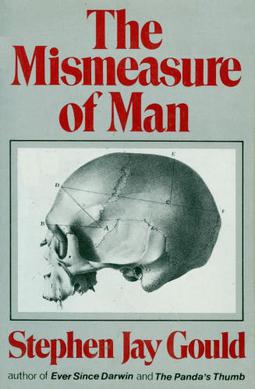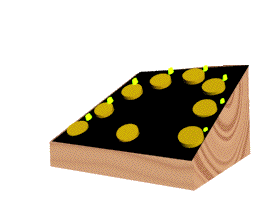
Arthur Robert Jensen was an American psychologist and writer. He was a professor of educational psychology at the University of California, Berkeley. Jensen was known for his work in psychometrics and differential psychology, the study of how and why individuals differ behaviorally from one another.

An intelligence quotient (IQ) is a total score derived from a set of standardised tests or subtests designed to assess human intelligence. The abbreviation "IQ" was coined by the psychologist William Stern for the German term Intelligenzquotient, his term for a scoring method for intelligence tests at University of Breslau he advocated in a 1912 book.
Discussions of race and intelligence – specifically regarding claims of differences in intelligence along racial lines – have appeared in both popular science and academic research since the modern concept of race was first introduced. With the inception of IQ testing in the early 20th century, differences in average test performance between racial groups were observed, though these differences have fluctuated and in many cases steadily decreased over time. Complicating the issue, modern science has concluded that race is a socially constructed phenomenon rather than a biological reality, and there exist various conflicting definitions of intelligence. In particular, the validity of IQ testing as a metric for human intelligence is disputed. Today, the scientific consensus is that genetics does not explain differences in IQ test performance between groups, and that observed differences are environmental in origin.

The Mismeasure of Man is a 1981 book by paleontologist Stephen Jay Gould. The book is both a history and critique of the statistical methods and cultural motivations underlying biological determinism, the belief that "the social and economic differences between human groups—primarily races, classes, and sexes—arise from inherited, inborn distinctions and that society, in this sense, is an accurate reflection of biology".
The g factor is a construct developed in psychometric investigations of cognitive abilities and human intelligence. It is a variable that summarizes positive correlations among different cognitive tasks, reflecting the fact that an individual's performance on one type of cognitive task tends to be comparable to that person's performance on other kinds of cognitive tasks. The g factor typically accounts for 40 to 50 percent of the between-individual performance differences on a given cognitive test, and composite scores based on many tests are frequently regarded as estimates of individuals' standing on the g factor. The terms IQ, general intelligence, general cognitive ability, general mental ability, and simply intelligence are often used interchangeably to refer to this common core shared by cognitive tests. However, the g factor itself is a mathematical construct indicating the level of observed correlation between cognitive tasks. The measured value of this construct depends on the cognitive tasks that are used, and little is known about the underlying causes of the observed correlations.
Psychophysics quantitatively investigates the relationship between physical stimuli and the sensations and perceptions they produce. Psychophysics has been described as "the scientific study of the relation between stimulus and sensation" or, more completely, as "the analysis of perceptual processes by studying the effect on a subject's experience or behaviour of systematically varying the properties of a stimulus along one or more physical dimensions".
Spearman's hypothesis has two formulations. The original formulation was that the magnitudes of the black-white differences on tests of cognitive ability positively correlate with the tests' g-loading. The subsequent formulation was that the magnitude of the black-white difference on tests of cognitive ability is entirely or mainly a function of the extent to which a test measures general mental ability, or g.
Christopher Richard Brand was a British psychological and psychometric researcher who gained media attention for his controversial statements on race and intelligence and paedophilia.

General knowledge is information that has been accumulated over time through various media and sources. It excludes specialized learning that can only be obtained with extensive training and information confined to a single medium. General knowledge is an essential component of crystallized intelligence. It is strongly associated with general intelligence and with openness to experience.

Mental chronometry is the scientific study of processing speed or reaction time on cognitive tasks to infer the content, duration, and temporal sequencing of mental operations. Reaction time is measured by the elapsed time between stimulus onset and an individual's response on elementary cognitive tasks (ECTs), which are relatively simple perceptual-motor tasks typically administered in a laboratory setting. Mental chronometry is one of the core methodological paradigms of human experimental, cognitive, and differential psychology, but is also commonly analyzed in psychophysiology, cognitive neuroscience, and behavioral neuroscience to help elucidate the biological mechanisms underlying perception, attention, and decision-making in humans and other species.
Research on the heritability of IQ inquires into the degree of variation in IQ within a population that is due to genetic variation between individuals in that population. There has been significant controversy in the academic community about the heritability of IQ since research on the issue began in the late nineteenth century. Intelligence in the normal range is a polygenic trait, meaning that it is influenced by more than one gene, and in the case of intelligence at least 500 genes. Further, explaining the similarity in IQ of closely related persons requires careful study because environmental factors may be correlated with genetic factors.

"Mainstream Science on Intelligence" was a public statement issued by a group of researchers led by psychologist Linda Gottfredson. It was published originally in The Wall Street Journal on December 13, 1994, as a response to criticism of the book The Bell Curve by Richard Herrnstein and Charles Murray, which appeared earlier the same year. The statement defended Herrnstein and Murray's controversial claims about race and intelligence, including the claim that average intelligence quotient (IQ) differences between racial and ethnic groups may be at least partly genetic in origin. This view is now considered discredited by mainstream science.
Environment and intelligence research investigates the impact of environment on intelligence. This is one of the most important factors in understanding human group differences in IQ test scores and other measures of cognitive ability. It is estimated that genes contribute about 20–40% of the variance in intelligence in childhood and about 80% in adulthood. Thus the environment and its interaction with genes account for a high proportion of the variation in intelligence seen in groups of young children, and for a small proportion of the variation observed in groups of mature adults. Historically, there has been great interest in the field of intelligence research to determine environmental influences on the development of cognitive functioning, in particular, fluid intelligence, as defined by its stabilization at 16 years of age. Despite the fact that intelligence stabilizes in early adulthood it is thought that genetic factors come to play more of a role in our intelligence during middle and old age and that the importance of the environment dissipates.
Peter Hans Schönemann was a German born psychometrician and statistical expert. He was professor emeritus in the Department of Psychological Sciences at Purdue University. His research interests included multivariate statistics, multidimensional scaling and measurement, quantitative behavior genetics, test theory and mathematical tools for social scientists. He published around 90 papers dealing mainly with the subjects of psychometrics and mathematical scaling. Schönemann's influences included Louis Guttman, Lee Cronbach, Oscar Kempthorne and Henry Kaiser.
Timothy C. Bates is a professor of differential psychology at the University of Edinburgh. His research interests include the genetics of reading and spelling, intelligence, and personality.

The Jensen box was developed by University of California, Berkeley psychologist Arthur Jensen as an experimental apparatus for measuring choice reaction time (RT) and individual differences in intelligence.
The history of the race and intelligence controversy concerns the historical development of a debate about possible explanations of group differences encountered in the study of race and intelligence. Since the beginning of IQ testing around the time of World War I, there have been observed differences between the average scores of different population groups, and there have been debates over whether this is mainly due to environmental and cultural factors, or mainly due to some as yet undiscovered genetic factor, or whether such a dichotomy between environmental and genetic factors is the appropriate framing of the debate. Today, the scientific consensus is that genetics does not explain differences in IQ test performance between racial groups.
The following outline is provided as an overview of and topical guide to human intelligence:

The Odd-Man-Out Reaction Time test is a test of reaction times that uses Arthur Jensen's testing apparatus, the Jensen box. The box is normally used for measuring choice reaction times in which the participant in the experiment is tested on their ability to recognize which of the eight lights of the Jensen box is illuminated, as quickly as possible. However, in the Odd Man Out Reaction Time test, three lights are illuminated in each trial. Two are close together and the other further apart; the individual being tested must identify this third light.
Sex differences in human intelligence have long been a topic of debate among researchers and scholars. It is now recognized that there are no significant sex differences in general intelligence, though particular subtypes of intelligence vary somewhat between sexes.







